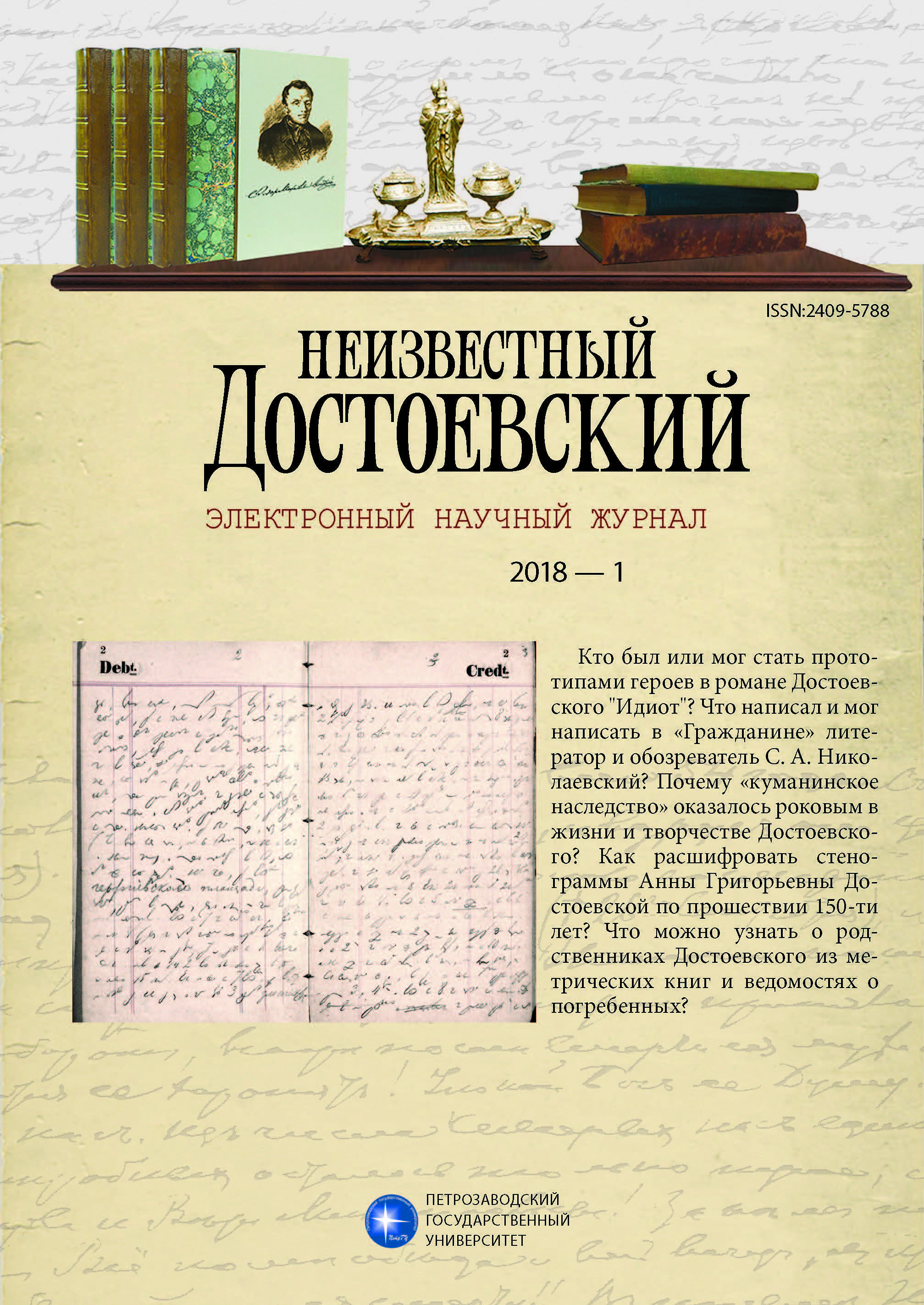Стенографическая система А. Г. Достоевской: проблема дешифровки
“The Kumanin Heritage Case” in Life and Works of F. M. Dostoevsky
Author(s): Irina Svyatoslavovna Andrianova, Oksana A. SosnovskayaSubject(s): Language and Literature Studies, Literary Texts, Fiction, Studies of Literature, Russian Literature, Philology
Published by: Петрозаводский государственный университет
Keywords: shorthand; decryption; F. M. Dostoevsky; Anna Dostoevskaya; diary; Franz Xaver Gabelsberger; Pavel Olkhin; Ceciliya Poshemanskaya;
Summary/Abstract: One of the particular features of the Dostoevsky family’s handwritten archive is that it contains documents containing verbatim records. This is the diary of Anna Dostoevskaya of 1867, rough novel “The Brothers Karamazov”, “A Writer’s Diary”, a series of memorial and business records made by the writer’s assistant. Most of these documents were deciphered in the 1950s—1970s by Ceciliya Poshemanskaya, however, there are documents, lines, words, left undeciphered or presumably deciphered while those deciphered require critical analysis. The purpose of this study is to find out whether the decoding of the transcripts of Anna Dostoevskaya 150 years since their creation, whether it is possible to repeat the experience of Ceciliya Poshemanskaya today. To achieve this goal, the main features of the stenographic system by Dostoevsky’s wife were identified, and difficulties in reading her transcripts were spotted. Anna Dostoevskaya used the German Gabelsberger cursive shorthand system adapted for the Russian language by Pavel Olkhin and currently forgotten. But she also updated this shorthand for her own use, inserting some logical acronyms “Samoslovy” inventing a “system in the system”, and thus, making the task of reading her transcripts more complicated. Our attention is focused on the earliest of A. Dostoevskaya’s shorthand documents still existing — the first part of the diary deciphered and edited by her and Ceciliya Poshemanskaya which provides a “key” to all the shorthand notes of the writer’s wife. Our experience of the work upon the given autograph showed that the methods employed by Ceciliya Poshemanskaya, more specifically the compilation of abbreviations dictionary used by Anna Dostoevskaya in her work and the use of this dictionary in further decryption, is still relevant today, especially due to the possibility of using modern digital technologies. The article presents excerpts from unknown archival materials of Anna Dostoevskaya and Ceciliya Poshemanskaya, shapes a plan in the study of verbatim records of Anna Dostoevskaya.
Journal: Неизвестный Достоевский
- Issue Year: 5/2018
- Issue No: 1
- Page Range: 43-67
- Page Count: 14
- Language: English, Russian

